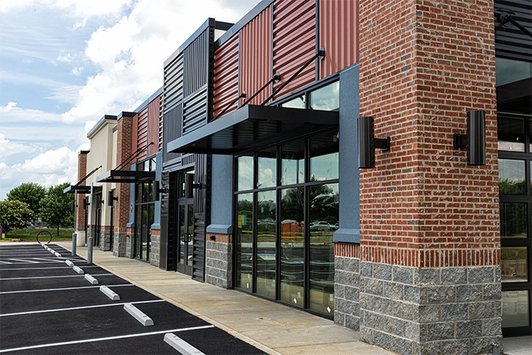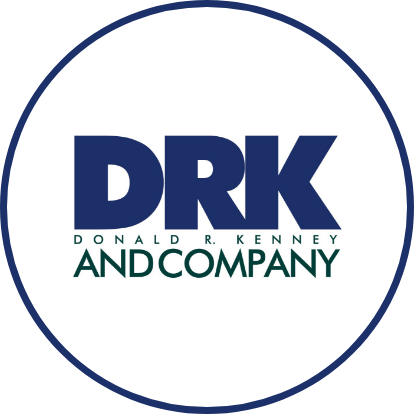Despite the looming threat of the COVID Omicron variant, plus the possibility of other variants to come, we anticipate a rather successful year for the commercial real estate (CRE) industry.

Yes, COVID will continue to impact when employees return to the office full time and how consumers interact with various businesses; but fiscal and monetary policies remain highly supportive of economic growth. We may notice the ripple effects of other factors, such as China’s economic slowdown and rising oil prices, but the labor shortages, supply disruptions, inflation, and pandemic that held back growth in 2021 will recede.
At the forefront of that economic recovery is the commercial real estate market. How we approach 2022 could set the foundation for success for several years.
I’m Heading into the Office, Dear
The main focus for offices has been to balance productivity with safety.
Hybrid work is the new normal, so it’s important for offices to provide amenities that support employee collaboration and wellness.
That also has a major impact on property changes. With remote working an increasingly popular option for many in the labor market, office space patterns will certainly shift.
And as business and tourism pick up in 2022, downtowns and hotels will begin to thrive again, alongside the already recovering food and beverage sector. We anticipate this to also stimulate the return to in-office operations.

Home Is Where the Heart Is… Perhaps Commercial Real Estate Profits, Too
With shifting migration patterns and increased concerns about affordability, housing demand is high and landlords are being swarmed with consumers competing for residency.
Despite the challenges of the last year, multifamily real estate is booming. In 2022, it will continue to recover, with downtown residences returning to occupancy levels not seen since before the pandemic.
As millennials begin purchasing homes, the suburban sector will see a rise in demand, as well. But construction starts are simply too low to keep up this year, which creates additional pressure for buyers and renters.
While local moves are in high demand, larger-scale relocating may slow. Previously, many moving decisions were based on job availability. If someone accepted a position out of state, they’d relocate to work near that new job. The ever-popular option to work remotely enables people in the labor market to accept a position at a company located just about anywhere and enjoy working from the comforts of home.
Grab Your Bags. We’re Going Shopping!
Retailers have hit a critical turning point in an evolving industry.
The retail sector is seeing the effects of a longer-term transition, which includes pricing adjustments, sluggish new construction, and beneficial returns on various investments, such as centers focused on convenience and experiences.
Essential retailers like grocery stores have fared well since consumer needs for food and housing goods have never wavered. Other retailers, not so much, especially if they depended on foot traffic for business. And with vaccination rates in constant flux and potential new COVID variants lurking in the shadows, retail recovery will likely remain fluid.
However, experts predict that in 2022, we’ll see the highest level of retail investment of the last decade.
It’s All in the Logistics (And Industrial Sectors)
The industrial and logistics sectors weren’t dampened by the pandemic as e-commerce flourished.
This year, we anticipate slower demand for physical goods as the service sector reopens and attracts consumers. That’s not necessarily a negative factor, though. That increased interest will finally give supply a chance to catch up with demand.
What’s more, third-party logistics companies are starting to dominate the industry and are on a mission to get ever closer to consumers.

Looking at the Whole Pie: The Commercial Real Estate Market
Commercial real estate thrives where there are companies and people in search of property.
As the housing market continues to evolve and many businesses are hopeful for the return to in-office work, the 2022 outlook for the real estate industry is bright.
CRE value will rise, especially for industrial and multifamily assets in high demand. And investment in this industry will likely hit a record year, fueled by high levels of low-cost debt availability and new investors attracted to the risk-adjusted returns found in private real estate debt.
We will likely also see a surge in real estate as a service, which is a business model that provides clients with access to commercial space and amenities that can be used on-demand.
Meanwhile, there’s increasing demand for companies to prioritize environmental, social, and governance issues, plus aging technology infrastructures and a slim labor market. Recruits are looking for employers that have developed return-to-work strategies, flexible working arrangements, organizational purpose, and technology advancements.
Are you ready to be part of the positive future that 2022 holds for commercial real estate? Contact the DRK team to learn about investment opportunities.

Related posts
Why It’s Important to Diversify Your Investment Portfolio
5 Tips for Choosing the Right Location for Your Business
Not Your Father’s Office: Design Inspiration for Commercial Real Estate Post-COVID
